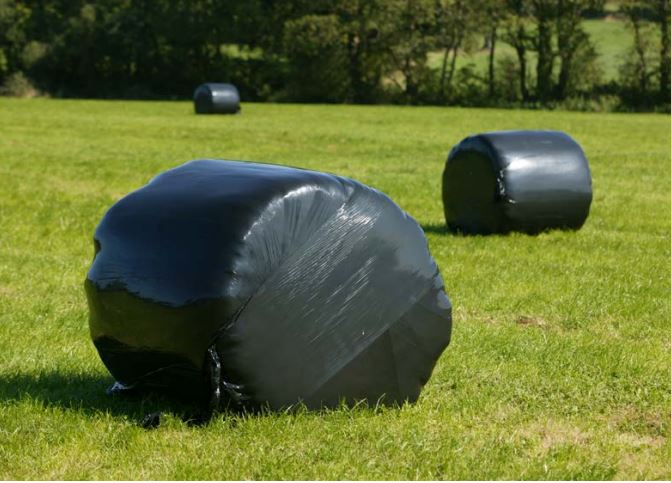Top 10 tips to optimise big bale silage quality
Friday, 28 May 2021
Forage research scientist, Rhun Fychan from IBERS, Aberystwyth University, gives his top 10 tips for making the best big bale silage:
1. Plan ahead to ensure cutting date and forage quality match requirements. Discuss your requirements in advance with your contractor, so you are ready to proceed when weather conditions allow.
2. Fertiliser and slurry shouldbe applied to allow sufficient time between application and cutting; nitrogen should not be over-applied.
3. Mowing height should be carefully judged as cutting too low can increase the risk of soil contamination, reduce quality and will delay regrowth.
4. Wilt rapidly and efficiently to retain quality. When conditions allow, use a spreader mower or ted immediately after mowing, taking account of soil conditions during harvest to avoid soil contamination.
5. Chop bales to maximise density. This will lead to improved fermentation and savings in baling, wrapping and transporting costs.
6. Well-shaped bales will have a better film-wrap seal. Form uniform swaths that will fill the bale chamber evenly, creating bales with well-formed shoulders.
7. Wrap bales as soon as possible with six layers of good quality bale-wrap. Applying this extra film-wrap is cost-effective and will improve fermentation and reduce mould.
Effect of film-wrap layering on film seal, mould and silage quality
|
|
4 layers |
6 layers |
|
Film seal (seconds) |
47 |
76 |
|
Mould cover (%) |
0.5 |
0.1 |
|
Dry matter loss (%) |
10.4 |
8.2 |
|
Dry matter (%) |
36.8 |
38.2 |
|
Water soluble carbohydrates (%) |
13.2 |
14.0 |
Increasing the number of film layers applied to grass bales will air ingress, reducing silage dry matter loss and mould growth, and resulting in a more efficient fermentation.
8. Wrapping by the stack rather than in the field will result in better film-wrap seal and less mould. If bales are wrapped in the field, handle and transport bales carefully to avoid damaging film-wrap. Transport bales ASAP – preferably on the day of baling.
9. Monitor bale stacks and repair any damage. Control vermin and place tyres and nets over stacks to protect from birds.
10. Stacking and handling bales with care is essential to avoid physical damage to the film-wrap. There is no evidence that stacking on-end is any better than the conventional stacking method.

Topics:
Sectors:
Tags:

